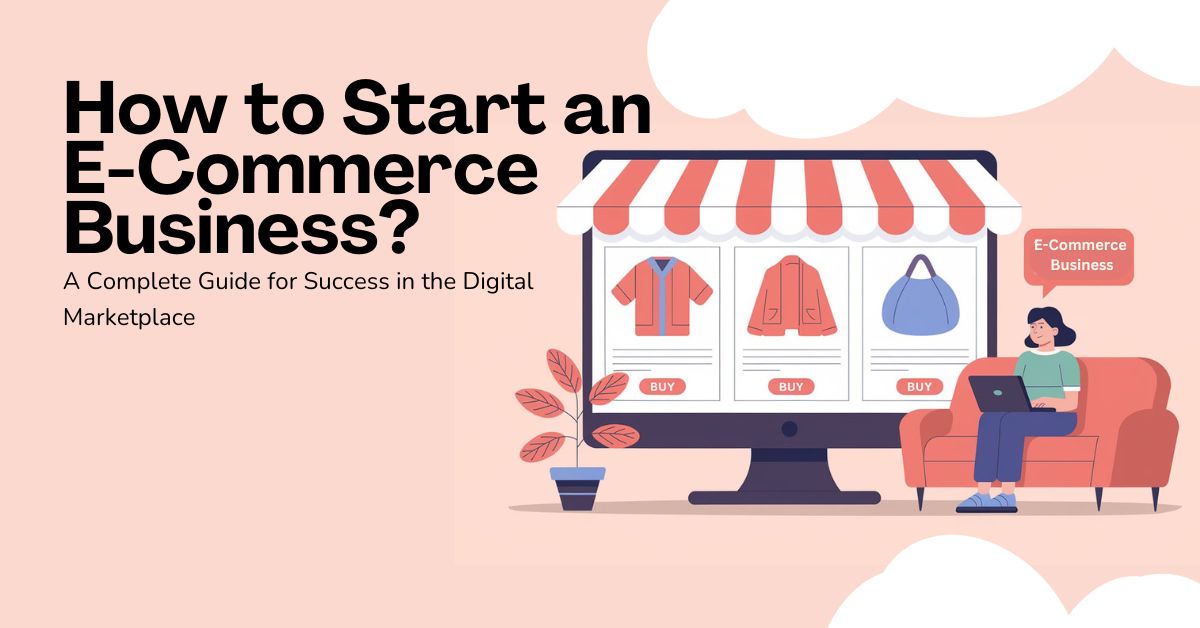How to Start an E-Commerce Business: A Step-by-Step Guide to Success
In today’s fast-paced digital world, learning how to start an e-commerce business can unlock unlimited potential for profit and success. The booming digital marketplace offers endless opportunities, but the challenge lies in understanding the critical steps to effectively launch and run your online store. This comprehensive guide will delve into the essential processes you need to navigate, from research and planning to marketing strategies, to ensure that your e-commerce venture thrives.
Understanding E-Commerce
E-commerce, or electronic commerce, refers to the buying and selling of goods and services over the internet. As the digital landscape continues to expand, e-commerce plays a vital role in today’s economy, enabling businesses to reach a global audience. Understanding the intricacies of online selling and the digital marketplace will provide a strong foundation for anyone looking to start an e-commerce business. With consumer habits shifting towards online shopping, now is an opportune time to enter the e-commerce sphere.
Research and Planning
Before diving into the world of e-commerce, thorough research and planning are paramount. This phase involves identifying your target audience, understanding their needs, and analyzing the competitive landscape to carve out a niche for your business.
Identify Target Audience
Knowing your target audience is crucial for any e-commerce business. Conducting market research to understand demographic trends, purchasing behaviors, and consumer preferences will help tailor your offerings to meet customer demands.
Analyzing Competitive Landscape
A comprehensive analysis of competitors can provide insights into pricing strategies, marketing tactics, and potential gaps in the market. By examining competitors, you can learn what works well and avoid common pitfalls, positioning your business for success.
Choosing the Right E-Commerce Platform
Selecting the right e-commerce platform is one of the most important decisions when starting an online business. Popular platforms such as Shopify, Magento, and WooCommerce offer various features that cater to different business needs. Here, we compare and contrast these major platforms to help you make an informed decision.
- Shopify: Known for its user-friendly interface and comprehensive support, Shopify is ideal for beginners and small to medium-sized businesses.
- Magento: A more robust solution suitable for larger businesses requiring extensive customization and additional features.
- WooCommerce: A popular choice for WordPress users, offering flexibility and control with a steep learning curve.
Evaluate your business requirements and budget to choose the platform that aligns with your goals and capabilities.
Setting Up Your E-Commerce Store
Building your online store is where creativity meets functionality. Ensuring that your website is both aesthetically pleasing and user-friendly is crucial for attracting and retaining customers. Here are some key steps to get you started:
Choosing a Domain Name
Your domain name is your online identity. Select a name that is simple, memorable, and reflective of your brand. Ensuring that your domain name is easy to spell and pronounce will aid in marketing efforts and brand recall.
Website Design and UX
The design of your website should enhance the user experience (UX) by fostering easy navigation and a seamless shopping experience. Investing in a clean, modern design that aligns with your brand image can significantly impact customer retention and sales conversions.
Inventory and Product Listings
Inventory management and crafting compelling product listings are critical components of your e-commerce strategy. Properly organized inventory ensures high availability of products, while effective product listings can enhance customer decision-making and drive sales.
Managing Inventory
Use advanced inventory management systems to monitor stock levels, predict demand, and prevent overstocking. Streamlining this process is essential for minimizing costs and improving profitability.
Creating Effective Product Listings
Crafting detailed product descriptions that highlight features, benefits, and unique selling points will attract customers and boost SEO rankings. Including high-quality images, accurate pricing, and SKU management improves the overall shopping experience and encourages purchases.
Implementing Payment Gateways and Security
Payment gateway implementation and robust security measures are pivotal to e-commerce success. Offering a variety of payment options and securing transactions inspire trust and enhance user satisfaction.
Choosing Payment Options
Incorporate multiple payment gateways such as PayPal, Stripe, and credit card processors to offer flexibility and convenience for your customers. Consider payment preferences and geographical differences when choosing services.
Online Security and Certification
Implementing SSL encryption and obtaining necessary certifications communicate credibility and protect customers’ sensitive information. Prioritizing security measures helps safeguard against breaches and builds customer confidence in your brand.
Marketing Your E-Commerce Business
Effective marketing strategies are essential for driving traffic and generating sales. Embrace digital marketing methods such as SEO, social media, and pay-per-click (PPC) advertising to promote your e-commerce venture.
E-Commerce SEO
Optimize your site for search engines by incorporating relevant keywords, improving site speed, and leveraging backlink building. E-commerce SEO enhances visibility and attracts organic traffic, which can lead to higher conversions.
Social Media Marketing
Social media platforms like Instagram, Facebook, and Pinterest offer opportunities to engage with customers, showcase products, and build brand loyalty. Consistent posting, targeted ad campaigns, and influencer partnerships can expand your reach.
Pay-Per-Click Advertising
Invest in PPC campaigns to quickly generate traffic and increase brand exposure. Tailoring ads with precise audience targeting can yield significant returns on investment and drive sales growth.
Managing Customer Service and Returns
Exceptional customer service is the cornerstone of repute and customer retention. Addressing customer queries efficiently and managing return policies effectively enhances the shopping experience and fosters long-term loyalty.
Building Brand Loyalty through Customer Service
Providing prompt, helpful support through various channels (e.g., email, chat, phone) assures customers that their needs are a priority. Personalizing customer interactions can further establish an emotional connection with your brand.
Return Policies and Management Strategies
Crafting transparent, hassle-free return policies minimizes disputes and enhances customer satisfaction. Implement systematic return processes to handle requests efficiently, reducing operational overheads while upholding customer trust.
Conclusion
Launching a successful e-commerce business requires commitment, strategic planning, and meticulous execution. By understanding e-commerce dynamics and adhering to best practices, you can establish a thriving online presence. As you embark on this journey, stay adaptable, leverage data-driven insights, and be prepared to innovate to maintain your competitive edge in the evolving digital marketplace.
Ready to start your e-commerce business? Subscribe to our newsletter for more expert tips and updates, and follow us on social media to stay connected!





